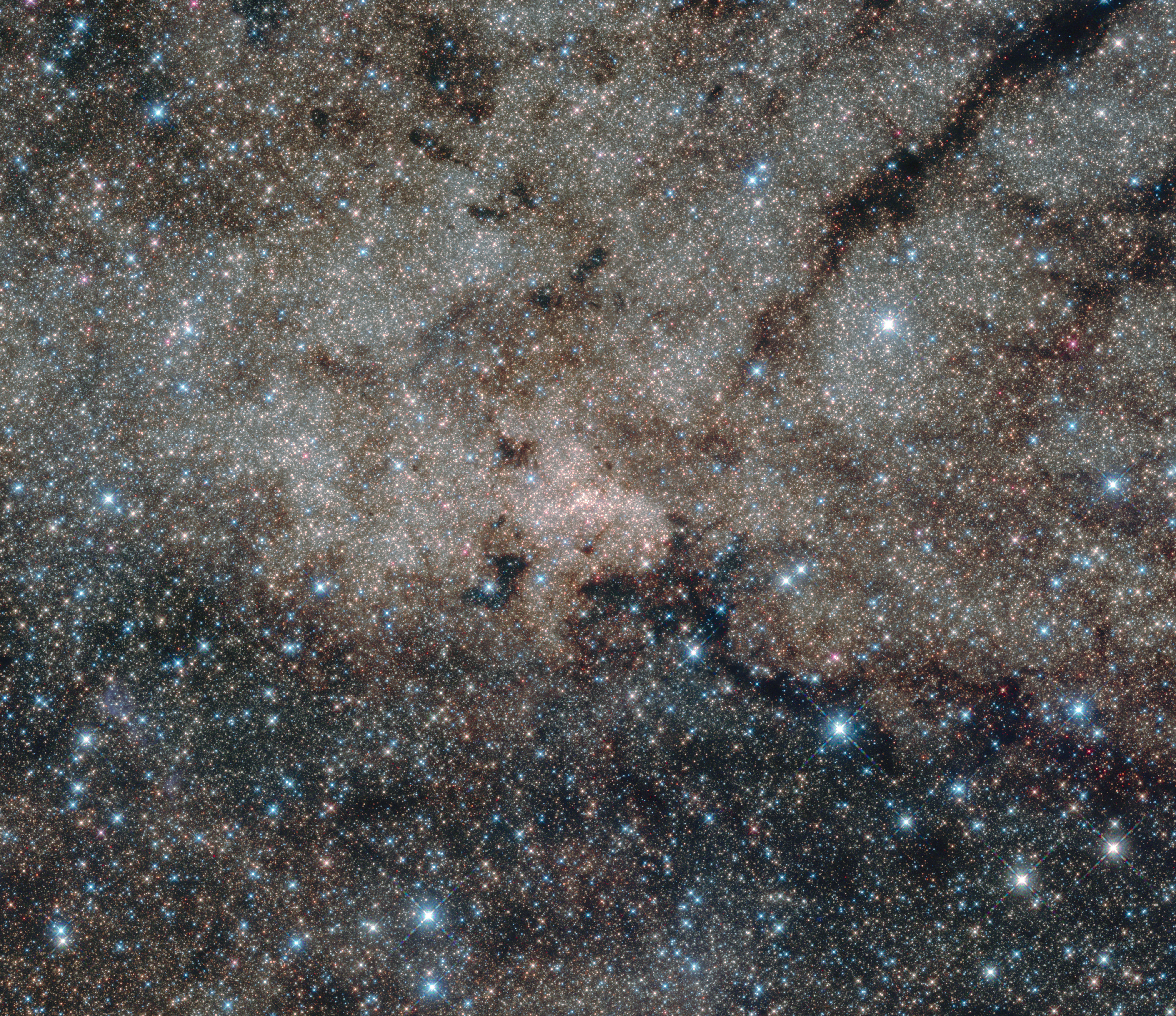500,000 Milky Way Stars Shine in Amazing New Video

A jaw-dropping new video takes viewers on an epic journey through the center of the Milky Way, where hundreds of thousands of stars jostle shoulder-to-shoulder near the galaxy's supermassive black hole.
The new Milky Way video, which we set to the cosmic tune "Stars" by Grace Potter, shows more than 500,000 stars in the densest, most massive cluster in the galaxy, which lies near the Milky Way's core. These stars were imaged by the iconic Hubble Space Telescope, a joint project involving NASA and the European Space Agency (ESA).
"This region is so tightly packed that it is equivalent to having 1 million stars crammed into the volume of space between us and Alpha Centauri, located 4.3 light-years away," ESA officials said in a statement.
"At the very hub of our galaxy, this dense, nuclear star-cluster surrounds the Milky Way’s central supermassive black hole, known as Sagittarius A*, which alone is about 4 million times the mass of the sun," the officials added. (That black hole is not visible in the new video.)
The Hubble video shows many stars that are not visible with the naked eye, due to the amount of dust in the galaxy's center, but that instead shine in infrared light.
A few stars in the video (shown in blue) are actually in the foreground and are not close to the Milky Way's center, which lies about 27,000 light-years from Earth. Other stars (shown in red) are either behind the dust or embedded inside of it. Even with Hubble's infrared vision, there are roughly 10 million stars in the cluster that the telescope cannot see, ESA officials said.
"Some extremely dense clouds of gas and dust are seen in silhouette, appearing dark against the bright background stars," ESA officials wrote. "These clouds are so thick that even Hubble's infrared capability cannot penetrate them."
Get the Space.com Newsletter
Breaking space news, the latest updates on rocket launches, skywatching events and more!
Hubble launched into orbit in April 1990, and it has been returning stunningly detailed images of the cosmos since spacewalking astronauts repaired a flaw in the telescope's primary mirror in 1993. The observatory's longevity has allowed astronomers to track the movements of some of the stars highlighted in the new video over several years, providing information on mass, structure and how the region was formed, ESA officials said.
Follow Elizabeth Howell @howellspace, or Space.com @Spacedotcom. We're also on Facebook and Google+. Originally published on Space.com.
Join our Space Forums to keep talking space on the latest missions, night sky and more! And if you have a news tip, correction or comment, let us know at: community@space.com.

Elizabeth Howell (she/her), Ph.D., was a staff writer in the spaceflight channel between 2022 and 2024 specializing in Canadian space news. She was contributing writer for Space.com for 10 years from 2012 to 2024. Elizabeth's reporting includes multiple exclusives with the White House, leading world coverage about a lost-and-found space tomato on the International Space Station, witnessing five human spaceflight launches on two continents, flying parabolic, working inside a spacesuit, and participating in a simulated Mars mission. Her latest book, "Why Am I Taller?" (ECW Press, 2022) is co-written with astronaut Dave Williams.









